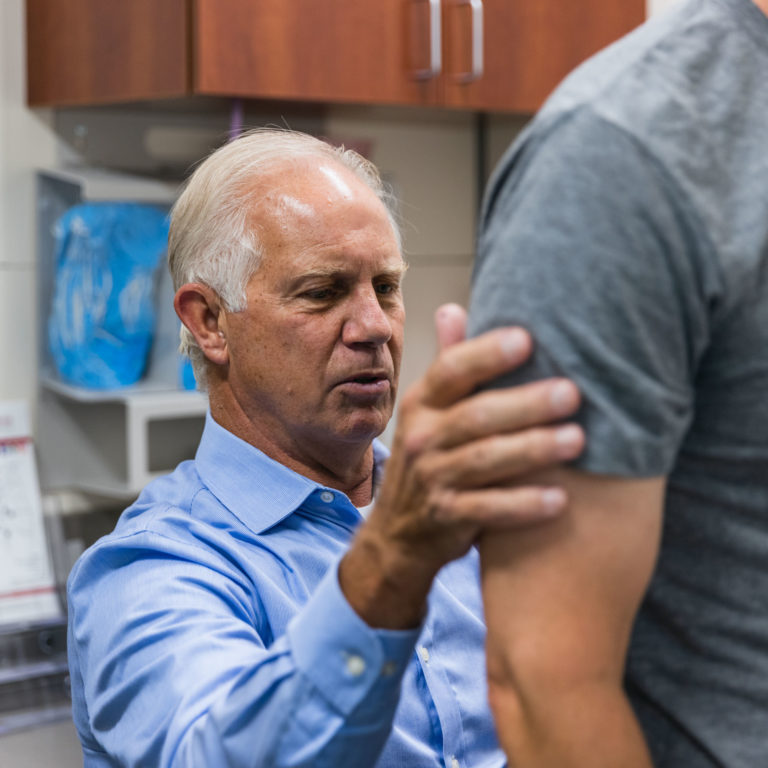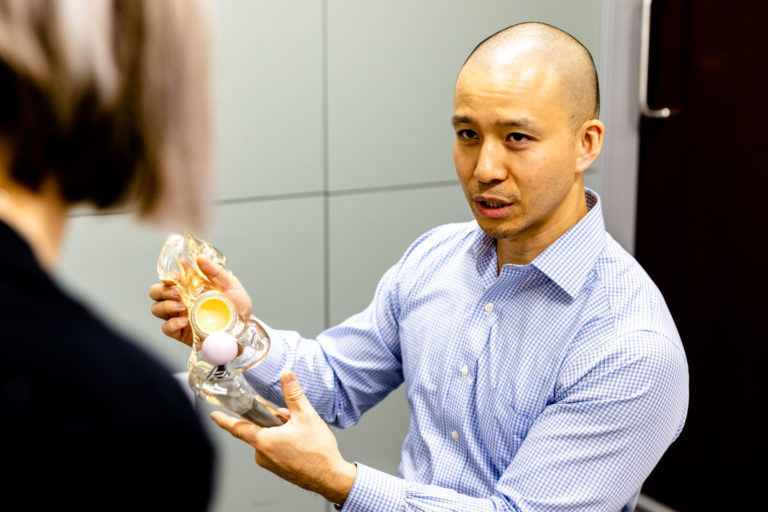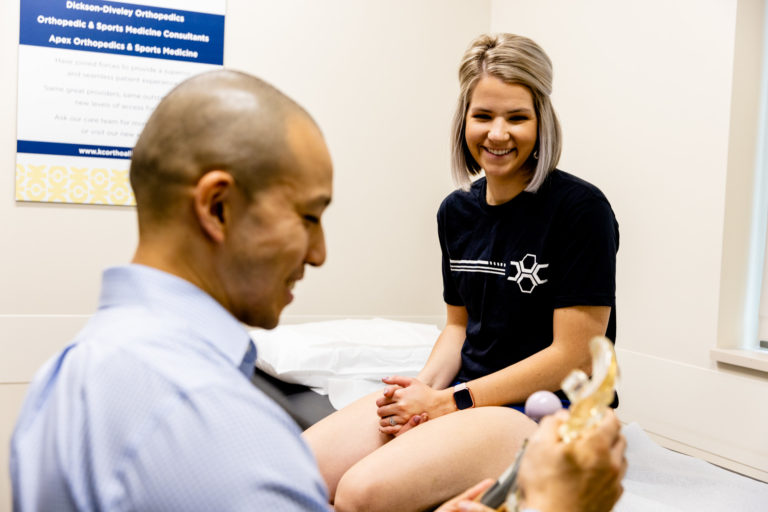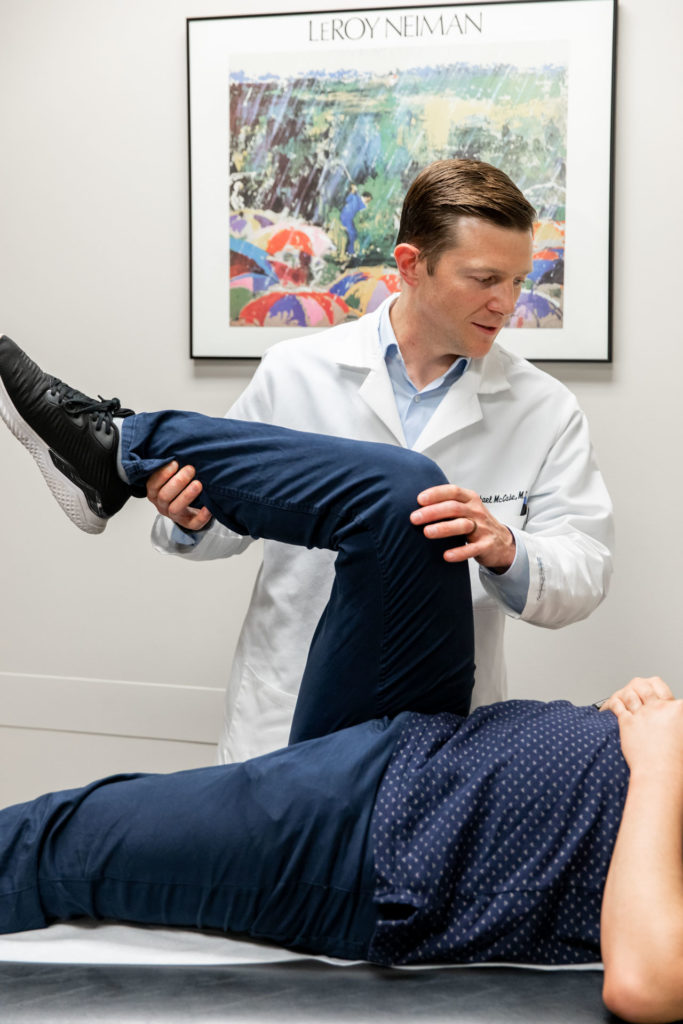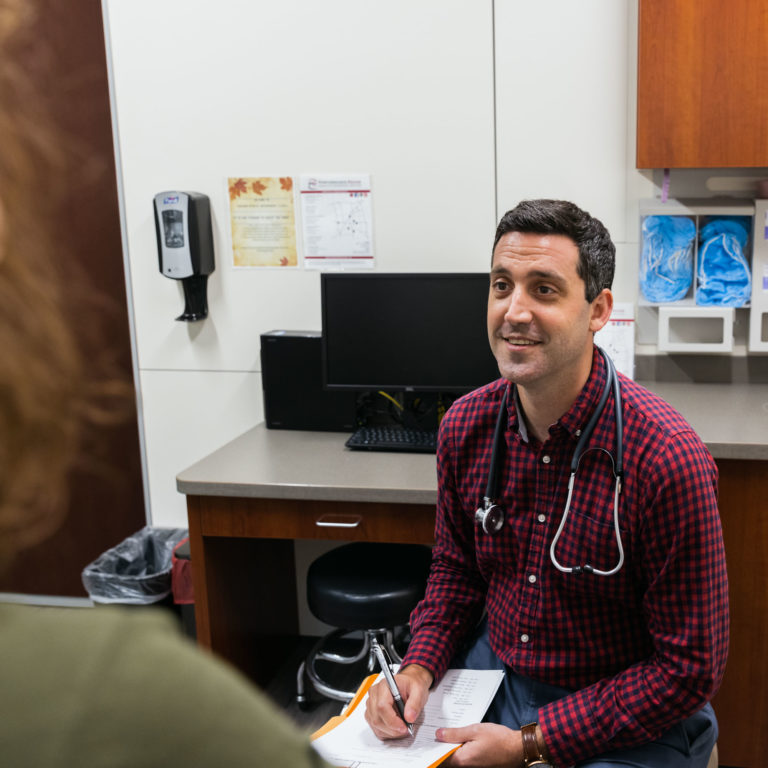Hip Arthroscopy in Kansas City
Hip Arthroscopy
Comprehensive solutions to hip pain and instability.

Understanding the Basics Behind Hip Arthroscopy
What is Hip Arthroscopy?
Suffering from hip pain is a problem for countless people, and it’s a strain on everyday life.
Hip issues affect a variety of individuals—from athletes, to those who simply live an active lifestyle—and non-surgical treatments might not be right for everyone. If you can no longer participate in the activities you love, it might be time to talk to an orthopedic specialist about a hip arthroscopy in Kansas City.
The highly trained orthopedic hip physicians at Kansas City Orthopedic Alliance have the expertise to treat hip issues surgically and non-surgically. When you visit a specialist at KCOA, we focus on creating a treatment plan based on your specific conditions, symptoms, and recovery goals.
Common symptoms that may require a hip arthroscopy include:
- Pain in your groin while sitting or walking
- Hip pain or tightness with physical activity/sports
- Pain along the side of your thigh and/or buttocks
- Inability to stand up normally
- Swelling in your hip or groin
- Difficulty laying on or sleeping on your hip
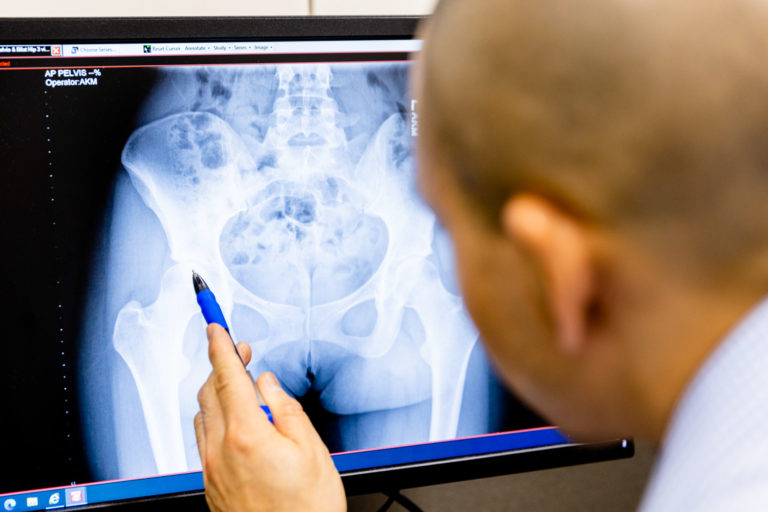
Choosing hip arthroscopy in Kansas City is a decision that typically involves guidance from your primary care doctor and orthopedic physician.
When you choose Kansas City Orthopedic Alliance, one of our highly trained orthopedic hip specialists will conduct an initial evaluation to better understand your condition. After a complete review of your results, your provider will then discuss the best treatment option for your specific hip condition.
Kansas City Orthopedic Alliance hip Injuries Assessment
Assessing the Injury
Finding the right hip treatment in Kansas City starts with an assessment.
You can think of hip pain as a spectrum, with some instances being more severe than others. The KCOA orthopedic specialists always focus on each individual patient and their concerns before creating a treatment plan.
Therefore, during your initial appointment, we will often ask questions such as:
From there, we can decide which treatment option aligns best with your needs and lifestyle goals. After a proper assessment, we often begin with a physical examination to help determine the origin point of your pain. In some cases, advanced testing may be required for a full diagnosis.
- Does your pain currently limit you or your activities?
- Has your pain progressed or worsened recently?
- Have you experienced any locking in your hip or an inability to stand or walk normally?
- Have you noticed any change in your symptoms that has made it more challenging to function?
- What are your lifestyle goals?
- How has pain affected those goals?
Examination
X-Ray
Also called radiographs, an X-ray captures a picture of the hip. Orthopedic physicians may order an X-ray to rule out the possibility of a fracture (broken bone), osteoarthritis, or other hip-related conditions.
Magnetic Resonance Imaging (MRI)
MRI captures images of muscles, bones, intervertebral discs, and tendons to help provide information other tests can’t detail. During an MRI, you will lie on a table that slides into a tube-shaped scanner. The machine creates a magnetic field around you, using pulsed radio waves to form the MRI images.
Diagnostic Injection
A physician inserts a needle in the hip and injects medicine into the joint. In most cases, the provider uses a real-time X-ray (fluoroscopy) or ultrasound to see where to place the needle in the joint. If the shot does not relieve pain within a few days, then the hip joint may not be the source of hip pain.
Causes
Causes of Hip Pain
First, it is important to understand the anatomy of a hip joint.
There are different types of joints in the body; the hip is a “ball-in-socket” joint. Just as the name suggests, a ball-in-socket joint consists of a ball-like structure that moves inside a depression in the bone to allow for rotational movements. In the hip, the ball-shaped head of your thigh bone (femur) that fits into the hip socket (acetabular socket) creates the joint.
Around the hip socket is a ring-shaped ligament called the labrum. This ligament has 3 main functions: Sealing the femoral head to keep fluids within the joint, helping stabilize the hip joint, and protecting the surrounding cartilage.
Treatment Alternatives
Non-Surgical Options
Oftentimes, patients choose hip arthroscopy or other surgical treatments after failing to see results from more conservative treatments. Kansas City Orthopedic Alliance physicians prefer non-surgical measures in most cases, and we usually only suggest surgical options after exhausting multiple less-invasive treatments. Non-surgical treatments for shoulder injuries include:
Physical Therapy
Seeking out guidance from a trained therapist to help restore function and strength is often a preferred treatment. Therapists are experts in the musculoskeletal system and their ability to assist with manual techniques or exercise instruction can lead to excellent outcomes.
Medications
At times, the pain becomes too much and hinders movement. In those instances, your doctor may recommend over-the-counter NSAIDs (Non-steroidal anti-inflammatory drugs, such as Advil) or prescription medications. Especially with NSAIDs, you should always talk to your doctor to ensure they are the right treatment for you. Side effects can include stomach irritation, ulcers, or even kidney damage. Reasonable dosing and monitoring can help alleviate those side effects.
Injections
Cortisone injections can help with inflammation, and the effects tend to last for 3 to 6 months before you might need another one. Many people manage their pain with injections and exercise.
Regenerative Medicine
Regenerative medicines like stem cell injections or platelet-rich plasma can help nourish worn or damaged tissue. This option works best if you have mild-to-moderate hip pain.
F.A.Q.
Frequently Asked Questions
Kansas City Orthopedic Alliance is here to help.
Our care is personal. Our team is knowledgeable. And we’re more available than ever.
With access to board-certified specialists across Kansas City, we have the tools to meet almost every musculoskeletal condition.
Our Locations
Overland Park, Kansas
10777 Nall Ave Suite 300 Overland Park, KS 66211Leawood, Kansas
3651 College Blvd. Leawood, KS 66211Kansas City, Missouri
Saint Luke's Medical Plaza #1 4320 Wornall Rd., Ste. 610 Kansas City, MO 64111Belton, Missouri
Belton Regional Campus 17067 S Outer Rd #301 Belton, MO 64012Blue Springs, Missouri
St. Mary’s Medical Center, Main Entrance 203 NW R.D. Mize Road, Suite 200 Blue Springs, MO 64014Shawnee Mission, Kansas
7450 Kessler St ste. 140 Merriam, KS 66204Prairie Star (Lenexa, Kansas)
Prairie Star 23401 Prairie Star PkwyBldg. B, Ste. 220 Lenexa, KS 66227

